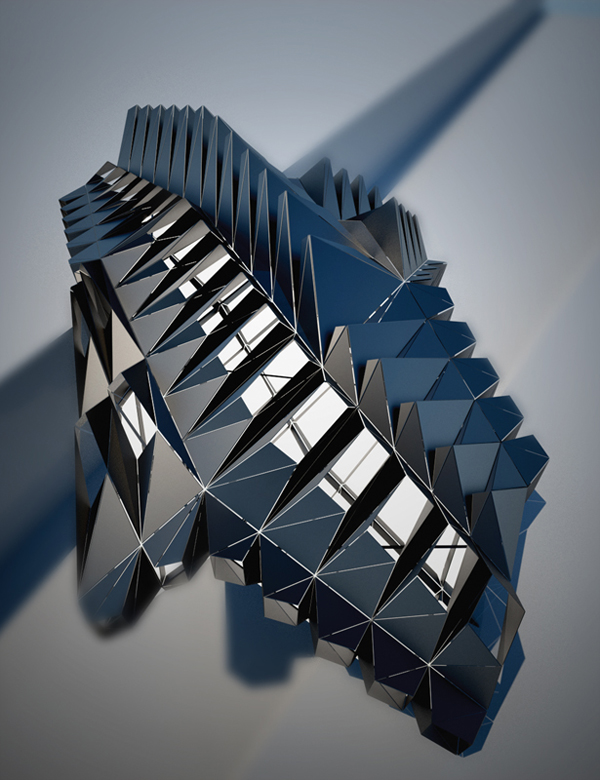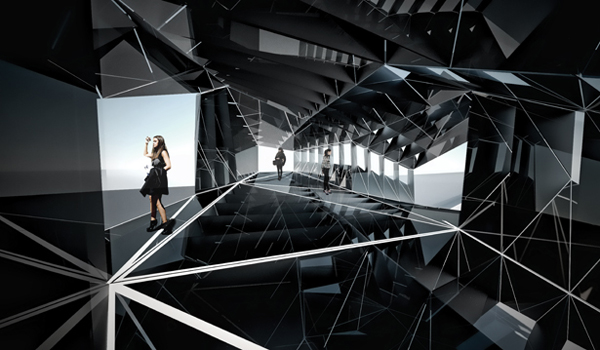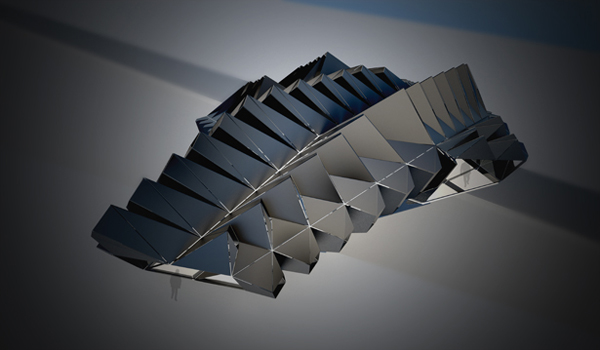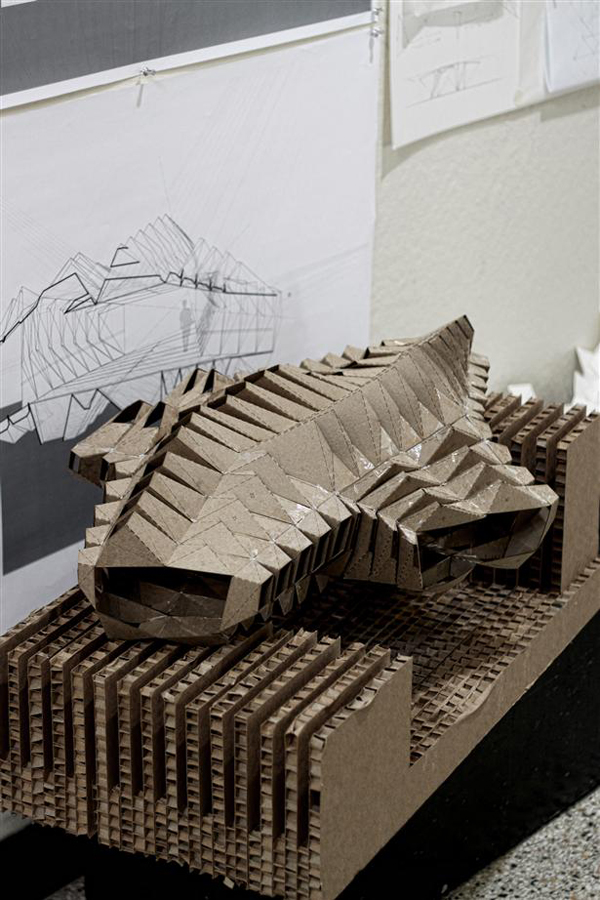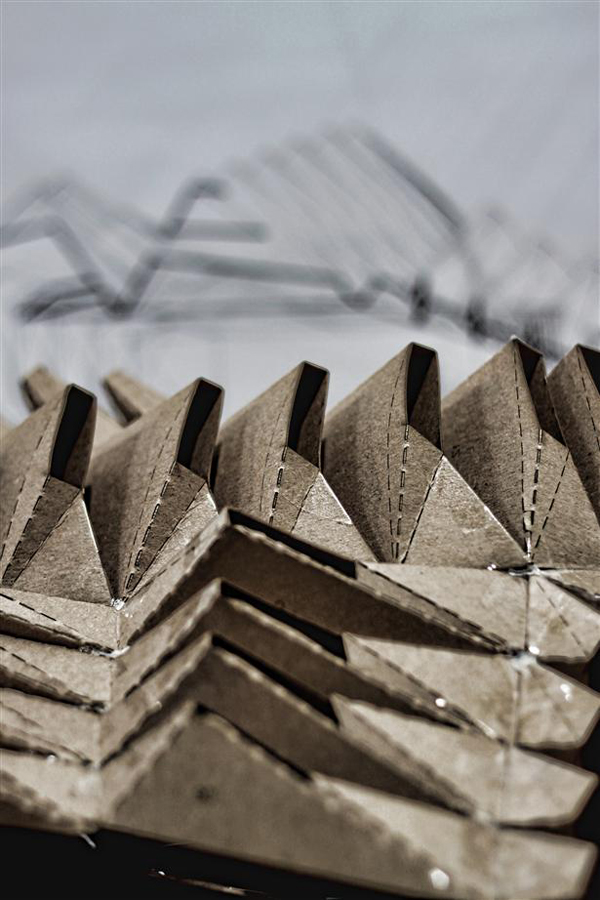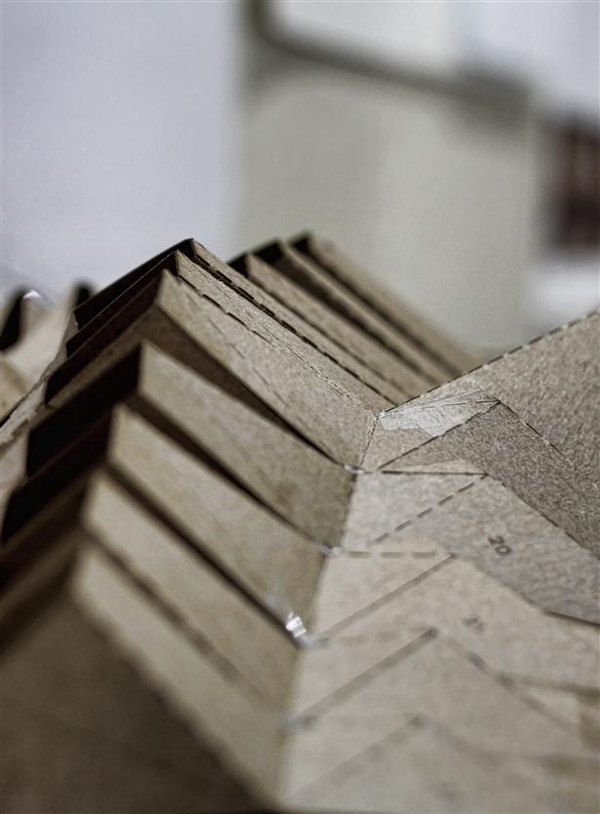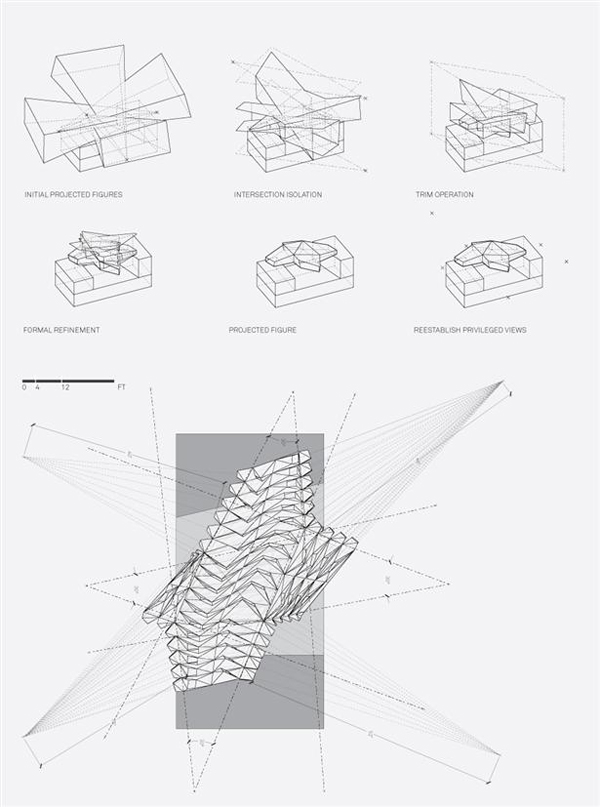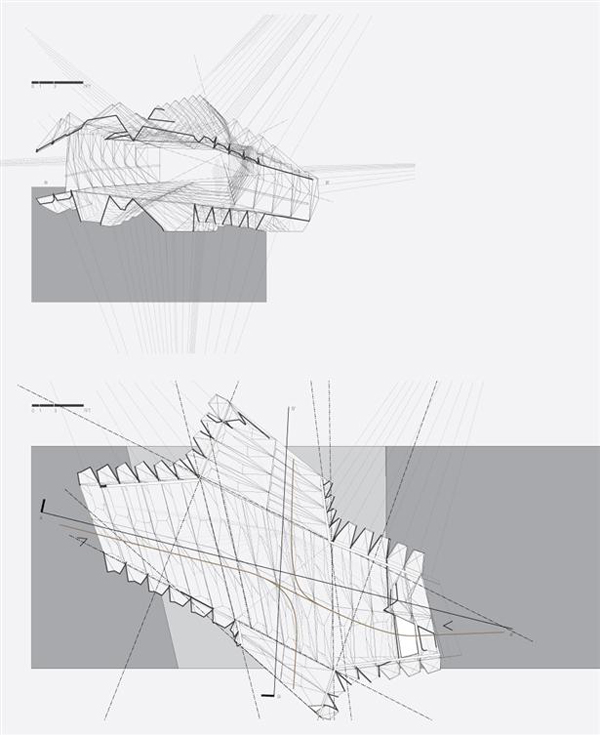Currently in the M.Arch program at MIT, the prospective architect and designer Alan Lu creates and explores architecture through experimenting with form, fabrication and design techniques. The bridge project continues the research in applying modular structures to various typologies and establishing a specificity of public spaces. The conceptual pedestrian pathway design combines the immediate influences of the site with repetitive structural elements, delivering a variation of the initial principle as the resulting object. The anamorphic bridge is derived from the convergence of vantage points at a given site. Through a process of intersection and trimming, a figure emerges that provides circulation and outlook spaces. Adaptive modules provide openings directed back to these vantage points in addition to acting as the primary structural elements.
The effects of creasing in material and form are introduced in a way achieving continuities in surface as well as varied linear spaces. The overall curvature of the surface evokes the spatial perception characteristic of bridging structures, with their archetypes using concave or convex appearance in order to traverse a divide. The project achieves the plasticity inherent to new paradigms of figuration and emergent techniques of construction and fabrication processes.

